Samoa
Welcome to Samoa
Welcome to Samoa, a stunning island paradise in the heart of the South Pacific that promises an unforgettable blend of natural beauty, rich culture, and warm hospitality. Known as the “Cradle of Polynesia,” Samoa invites travelers to immerse themselves in its breathtaking landscapes, vibrant traditions, and welcoming communities, making it an ideal destination for 2025.
Samoa is an archipelago consisting of two large islands, Upolu and Savai’i, along with several smaller islands. The islands are volcanic in origin, featuring dramatic jagged peaks, lush rainforests, cascading waterfalls, and pristine beaches with turquoise lagoons. Samoa’s natural wonders include the famous To Sua Ocean Trench—a natural swimming hole surrounded by gardens—and the awe-inspiring Alofaaga Blowholes, where seawater jets powerfully shoot into the air. The islands also offer a rich cultural tapestry that has been preserved for over 3,000 years, evident in traditional villages, open-air fales (meeting houses), and vibrant local ceremonies.
The capital city, Apia, located on Upolu, is a lively hub where visitors can explore markets like Maketi Fou, sample fresh tropical fruits, and purchase handmade crafts. Beyond the city, Samoa offers diverse activities ranging from snorkeling and surfing to hiking up Mount Vaea, where the famous writer Robert Louis Stevenson is buried, providing panoramic views of the island.
Samoa’s welcoming atmosphere is enhanced by its people, who are known for their friendliness, strong family values, and the living culture of Faa-Samoa—the Samoan way of life. This cultural richness is accessible to visitors through village stays, traditional feasts, and cultural performances, offering an authentic experience beyond typical tourist attractions.
Why Visit Samoa?
1.
Spectacular Natural Landscapes
Samoa’s volcanic islands boast breathtaking scenery that includes jagged mountain peaks, dense rainforests, crystal-clear lagoons, and white sandy beaches. Whether you want to explore lava tubes, swim in natural pools like the To Sua Ocean Trench, or relax on postcard-perfect beaches such as Lalomanu, Samoa’s diverse landscapes cater to every nature lover’s dream.
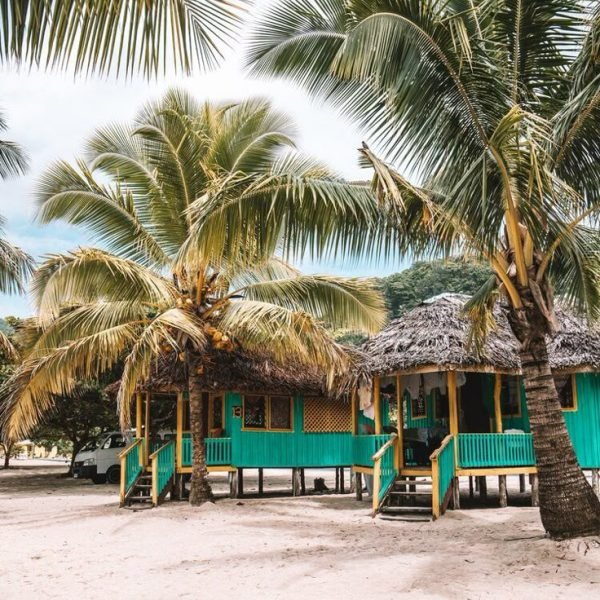
2.
Rich and Accessible Culture
Unlike many other destinations, Samoa’s culture is not confined to staged shows but is a living, breathing part of daily life. Visitors can witness traditional crafts, participate in community events, and enjoy authentic Samoan hospitality in beach fale accommodations hosted by local families. The deep-rooted Polynesian heritage, including traditional tattooing and village life, offers a unique cultural immersion that enriches any visit.
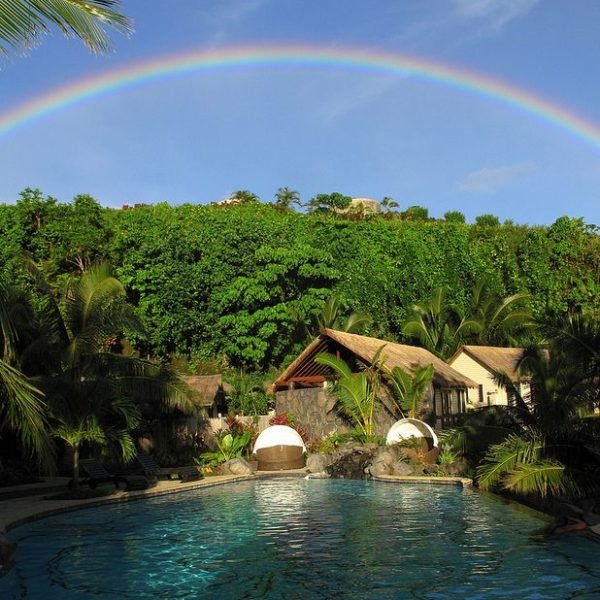
Planning Your Trip
Visa Information
Samoa welcomes international visitors with ease. Most travelers do not require a visa for stays up to 90 days, making entry straightforward and hassle-free. This generous visa policy encourages tourists to explore the islands without bureaucratic barriers.
Best Time to Visit
Samoa enjoys a warm, tropical climate year-round, with temperatures typically ranging from 26°C to 31°C (79°F to 88°F). The best time to visit is during the dry season, which runs from May to October, offering pleasant weather ideal for beach activities, hiking, and outdoor exploration. The wet season from November to April brings more humidity and occasional tropical storms but also lush green landscapes and fewer tourists.
Serbia has a continental climate, with hot summers and cold winters. The best time to visit depends on your interests:
- Spring (April–June): Mild weather, blooming landscapes, and fewer tourists make this an excellent time for sightseeing and outdoor activities.
- Summer (July–August): Festival season! Enjoy the world-famous Exit Festival in Novi Sad or the trumpet-fueled Guca Festival. Expect warm temperatures, especially in July and August.
- Autumn (September–October): Harvest time brings wine festivals and vibrant colors to the countryside. The weather is still pleasant, ideal for hiking and exploring.
- Winter (November–March): Serbia’s mountains become a haven for skiers and snow lovers, while the cities offer cozy cafes and festive markets.
Getting To and Around
Getting to Samoa
Samoa is accessible by air, with Faleolo International Airport serving as the main gateway. Direct flights connect Samoa to major hubs like Auckland, Sydney, and Fiji, making it relatively easy to reach from Australasia and parts of the Pacific. Cruise ship visits are also increasing, with 27 cruise ships scheduled for 2025, offering another scenic way to arrive and explore the islands.
Getting Around
Travel within Samoa is convenient, with options including rental cars, taxis, and local buses. The two main islands, Upolu and Savai’i, are connected by regular ferry services, allowing visitors to easily explore both. Roads are generally well-maintained, and driving is on the left side. For a more immersive experience, consider guided tours or village stays to engage with local culture and communities.
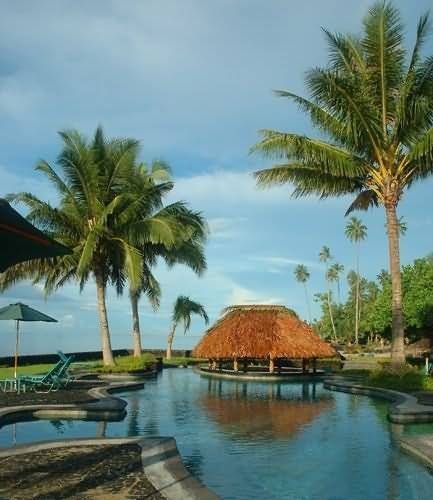
Accommodation
Samoa in 2025 offers a rich tapestry of accommodation options and culinary delights that cater to every traveler’s taste and budget. From luxury resorts overlooking pristine beaches to authentic beach fales and vibrant local cuisine, your stay in Samoa promises to be as memorable as the island’s stunning landscapes and warm culture.
Luxury Resorts and Beachfront Hotels
Samoa boasts several high-end resorts that combine comfort, luxury, and spectacular ocean views. These resorts often feature private beaches, swimming pools, spas, and on-site restaurants serving local and international cuisine.
- Taumeasina Island Resort (Upolu) is one of the most popular luxury options, known for its calm, deep beach perfect for snorkeling, kayaking, and stand-up paddleboarding. The resort offers spacious rooms and excellent amenities, including breakfast included in most packages.
- Return to Paradise Resort & Spa (Upolu) offers a pristine, untouched beach experience with direct access to excellent snorkeling spots. It is ideal for travelers seeking tranquility combined with luxury comforts.
- Saletoga Sands Resort & Spa (Upolu) is another favorite, featuring beachfront rooms and a welcoming atmosphere that suits families and couples alike.
- Le Vasa Resort (Upolu) is renowned for its stunning sunset views and ocean-side fales, blending traditional Samoan architecture with modern luxury.
- On Savai’i Island, Le Lagoto Resort and Spa stands out as the premier luxury accommodation, offering spacious rooms built with local materials, private beaches, and a serene atmosphere perfect for relaxation.
Mid-Range and Boutique Hotels
For travelers seeking a balance of comfort and affordability, Samoa offers boutique hotels, eco-lodges, and guesthouses that emphasize local culture and sustainability.
- Dave Parker Eco Lodge (Apia, Upolu) is a standout eco-friendly option surrounded by lush gardens, where guests enjoy fresh local meals and a peaceful connection to nature.
- Lynn’s Getaway Hotel (Apia, Upolu) provides an authentic Samoan guesthouse experience with warm, tropical interiors and exceptional hospitality.
- The Tiapapata Art Centre Tiny House in Apia offers a unique eco-retreat with artistic flair, perfect for travelers who appreciate design and sustainability.
Beach Fales and Budget Options
For an authentic Samoan experience, staying in a traditional beach fale (open-sided thatched hut) is highly recommended. These accommodations offer basic facilities but provide direct access to Samoa’s stunning beaches and an immersive cultural experience.
- Taufua Beach Fales (Lalomanu, Upolu) is highly rated for its sandy beach location and family-friendly atmosphere.
- Faofao Beach Fales and Lauiula Beach Fales on Savai’i provide rustic charm and a chance to live simply by the sea.
- Budget travelers will find locally owned and family-run accommodations on Savai’i Island, where the emphasis is on traditional lifestyle and community engagement.
Family-Friendly and All-Inclusive Resorts
South Upolu is a favored area for families due to its calm beaches and relaxed vibe. Resorts like Aga Reef Resort and Spa offer stylish accommodations with family amenities, while Coconuts Beach Club Resort and Spa is famous for its overwater villas, beachfront bungalows, and treehouse suites, blending luxury with authentic Samoan charm.
Practical Tips for Accommodation
- Book early, especially during peak travel seasons (May to October), as popular resorts and beach fales fill quickly.
- Consider the location carefully: Upolu is more developed with easy access to Apia, while Savai’i offers a quieter, more traditional experience.
- Many resorts include breakfast, but self-catering options are available in guesthouses and beach fales.
- For eco-conscious travelers, several lodges focus on sustainability and community support, offering a responsible way to enjoy Samoa’s natural beauty.
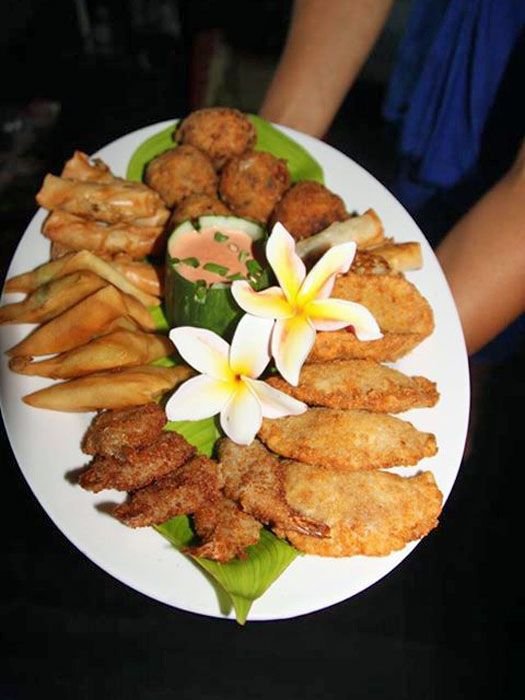
Food and Drink
Traditional Samoan Cuisine
Samoan food is a delicious reflection of the islands’ natural bounty and Polynesian heritage. The cuisine centers around fresh seafood, tropical fruits, root vegetables, and coconut, with simple yet flavorful preparations.
- Palusami is a classic dish made from taro leaves baked in coconut cream, often with onions and sometimes corned beef or fish added. It’s rich, creamy, and a must-try.
- Oka i’a is Samoa’s version of ceviche—raw fish marinated in coconut milk, lime juice, onions, and chili. It’s refreshing and widely enjoyed as an appetizer or light meal.
- Taro, breadfruit, and cassava are staple starches, usually boiled or roasted and served alongside meat or fish.
- Sapasui, Samoa’s take on chop suey, is a popular comfort food made with vermicelli noodles, vegetables, and meat in a savory soy-based sauce.
- Fresh tropical fruits like papaya, mango, pineapple, and bananas are abundant and often served as dessert or snacks.
Dining Experiences
- Many resorts and hotels feature restaurants that serve both traditional Samoan dishes and international cuisine, catering to diverse palates.
- Village homestays and beach fales often provide home-cooked meals, offering an authentic taste of local flavors and hospitality. Sharing a traditional umu feast—food cooked in an earth oven—is a highlight for many visitors.
- Apia’s markets, such as the Maketi Fou, are great places to sample street food, buy fresh produce, and experience local life.
Drinks and Refreshments
- Coconut water straight from a freshly cut coconut is the quintessential Samoan refreshment, hydrating and delicious.
- Kava, a traditional ceremonial drink made from the root of the yaqona plant, is central to Samoan social life. It has a mild sedative effect and is consumed during cultural gatherings. Visitors are welcome to join kava ceremonies respectfully.
- Samoa also produces local beers and tropical fruit juices. Imported beverages are available in supermarkets and resorts.
- Tap water is generally not recommended for drinking; bottled water is widely available.
Tips for Food and Drink
- When eating street food or at local markets, choose vendors with high turnover and freshly cooked items to reduce the risk of stomach upset.
- If you have dietary restrictions, communicate them clearly, as traditional Samoan meals often include coconut and seafood.
- Trying local dishes is a great way to connect with the culture, so be adventurous and sample as many specialties as you can.
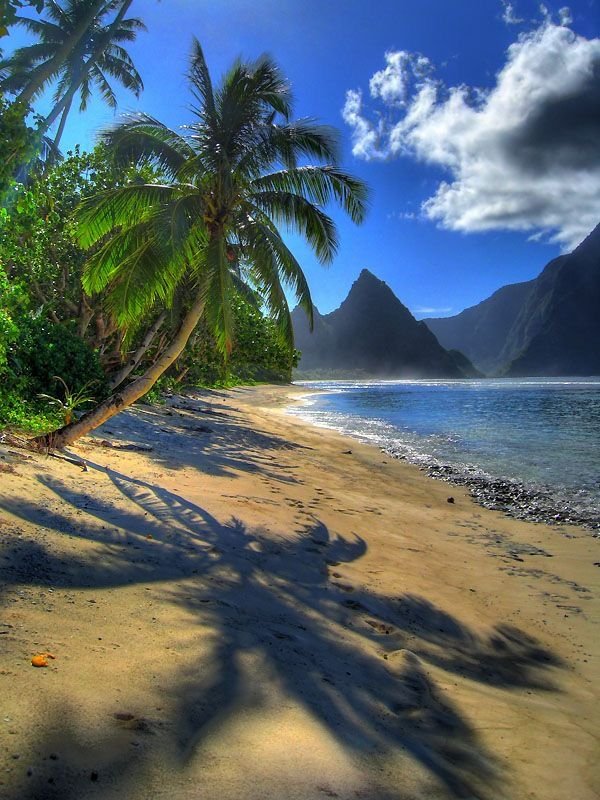
Must-See Attractions
To Sua Ocean Trench (Upolu)
One of Samoa’s most iconic natural wonders, the To Sua Ocean Trench is a spectacular 30-meter deep swimming hole nestled in a lush garden setting on Upolu’s south coast. Visitors descend a wooden ladder into the clear turquoise water surrounded by hanging greenery and volcanic rock formations. It offers a surreal swimming experience in a natural pool connected to the ocean by underwater caves. The site also features walking paths leading to additional smaller sinkholes and a traditional Samoan swimming pool by the coast, making it a must-visit for nature lovers and photographers alike.
Alofaaga Blowholes (Savai’i)
Located on the southwest coast of Savai’i, the Alofaaga Blowholes are a dramatic display of nature’s power. When the tide is high, ocean waves surge through volcanic rock fissures, shooting seawater hundreds of feet into the air with thunderous booms. Locals often add coconuts into the blowholes to create spectacular water eruptions, enhancing the spectacle. The site also offers access to the culturally significant Pa Sopo’ia Cave nearby. The walk to the blowholes is short but rugged, so sturdy footwear is recommended.
Papase’ea Sliding Rocks (Upolu)
For a fun and unique experience, the Papase’ea Sliding Rocks are natural rock formations shaped like waterslides, perfect for an adrenaline rush. Visitors climb down steps to reach three main slides: the “men’s slide,” a steep 5-meter vertical slide; the “kids’ slide,” a gentler slope; and the “women’s slide,” a moderate slide with a splash at the end. It’s a joyful spot for families and groups, especially on weekdays when crowds are thinner.
Saleaula Lava Fields (Savai’i)
This hauntingly beautiful landscape tells the story of the volcanic eruption of Mt. Matavanu (1905–1911) that reshaped Savai’i. The lava flows engulfed villages, including the Saleaula village church, which now stands partially buried in hardened lava. Visitors can walk among the lava fields, explore the church ruins, visit the “Virgin’s Grave” where lava reportedly spared a young girl’s resting place, and enjoy views of dramatic lava cliffs. This site offers a fascinating glimpse into Samoa’s geological history.
Piula Cave Pool (Upolu)
A refreshing freshwater pool located on the grounds of Piula Theological College, Piula Cave Pool is famous for its crystal-clear waters and underwater caves connected by a short tunnel. It is ideal for swimming and snorkeling, providing a cool retreat from the tropical heat. The pool is surrounded by lush gardens and is popular with both locals and tourists seeking a serene natural swimming spot.
Lalomanu Beach (Upolu)
Often regarded as one of the world’s best beaches, Lalomanu Beach features powdery white sand, swaying coconut palms, and a protected marine reserve teeming with colorful coral and fish. It’s perfect for swimming, snorkeling, kayaking, or simply relaxing in a traditional thatched beach fale. The beach’s tranquil atmosphere, stunning sunrises and sunsets, and vibrant marine life make it a top destination for beach lovers.
Robert Louis Stevenson Museum (Upolu)
For history and literature enthusiasts, the Robert Louis Stevenson Museum offers insight into the life of the famous Scottish author who spent his final years in Samoa. The museum is set in his former home, surrounded by tropical gardens, and features personal artifacts and guided tours that bring his story and Samoan history to life.
Palolo Deep Marine Reserve (Upolu)
This marine reserve near Apia is a hotspot for snorkeling and diving, featuring vibrant coral reefs, giant clams, sea turtles, and a variety of tropical fish. The reserve’s clear waters and abundant marine life make it an excellent site for underwater exploration.
Immaculate Conception Cathedral (Apia)
A stunning architectural landmark in Samoa’s capital, this cathedral is known for its beautiful stained-glass windows, painted dome, and timber ceilings. It is the largest church in Samoa and offers a peaceful place for reflection. Attending a Sunday service here is also a memorable cultural experience, highlighted by the choir’s powerful voices.
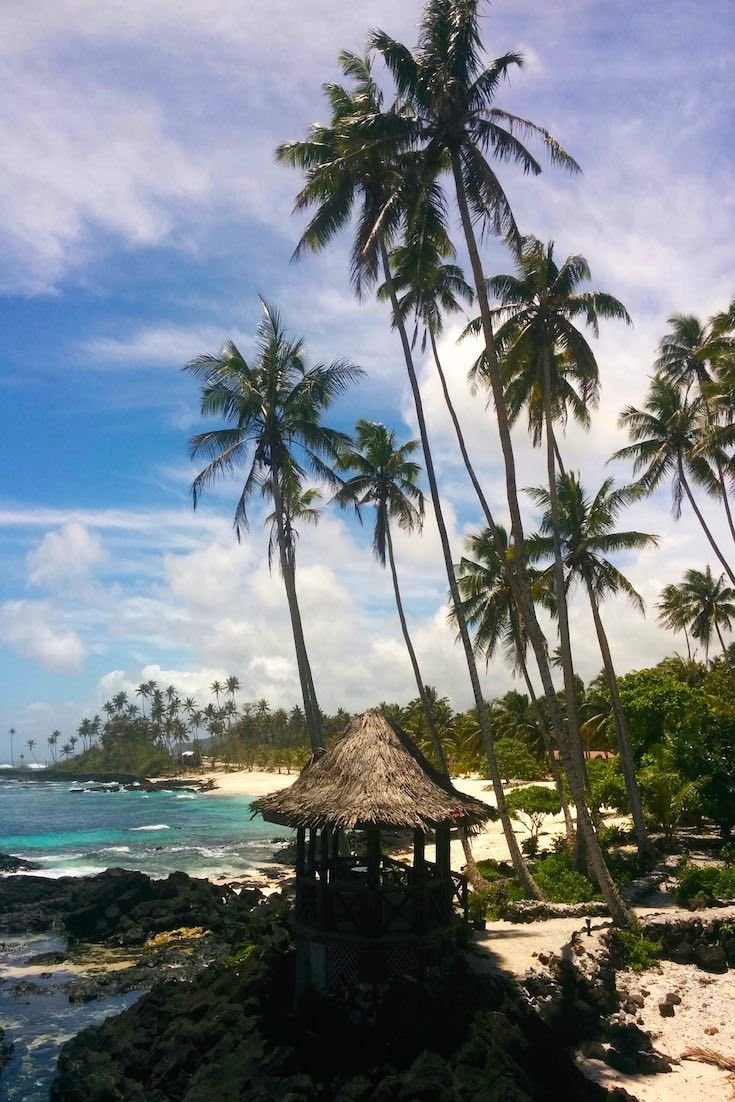
Must-Do Activities
Swim in Natural Pools and Ocean Trenches
Take a dip in the To Sua Ocean Trench or Piula Cave Pool for an unforgettable swimming experience in crystal-clear waters surrounded by lush tropical scenery. These natural pools offer a refreshing escape from the tropical heat and a chance to connect with Samoa’s unique volcanic landscape.
Explore Waterfalls and Rainforests
Samoa is home to numerous waterfalls such as Afu Aau Waterfalls on Savai’i, where you can swim in cool natural basins surrounded by jungle. Hiking through rainforests in O Le Pupu-Pue National Park on Upolu offers scenic trails, birdwatching, and encounters with native flora and fauna.
Surf and Snorkel in Marine Reserves
Samoa’s coastline offers excellent surfing spots, especially on Savai’i’s south coast. The Palolo Deep Marine Reserve near Apia is perfect for snorkeling and diving, allowing you to swim alongside colorful coral reefs, giant clams, and sea turtles.
Experience Samoan Culture and Village Life
Engage with local communities by staying in traditional beach fales, participating in a fiafia night (cultural performance), or joining a kava ceremony. Visiting local markets like Salelologa Market on Savai’i or Maketi Fou in Apia gives insight into daily life and offers opportunities to buy handmade crafts and fresh produce.
Take Scenic Coastal Walks
The Coastal Lava Cliff Walk on Upolu provides stunning views of the ocean and volcanic coastline. Walking these trails offers a peaceful way to appreciate Samoa’s rugged natural beauty and spot seabirds and marine life.
Visit Historical and Cultural Sites
Explore the Robert Louis Stevenson Museum to learn about the author’s connection to Samoa. Visit the Saleaula Lava Fields to witness the impact of volcanic eruptions on local communities. The Immaculate Conception Cathedral in Apia is also a must-see for its architecture and spiritual ambiance.
Relax on Pristine Beaches
Spend time unwinding on Lalomanu Beach or other secluded beaches where you can lounge under coconut palms, watch spectacular sunsets, and enjoy the calm, warm waters of the South Pacific.
Try Local Cuisine
Savor traditional Samoan dishes such as palusami (taro leaves with coconut cream), oka (raw fish marinated in coconut milk and lime), and fresh tropical fruits. Many resorts and village eateries offer authentic food experiences that highlight local ingredients and flavors.
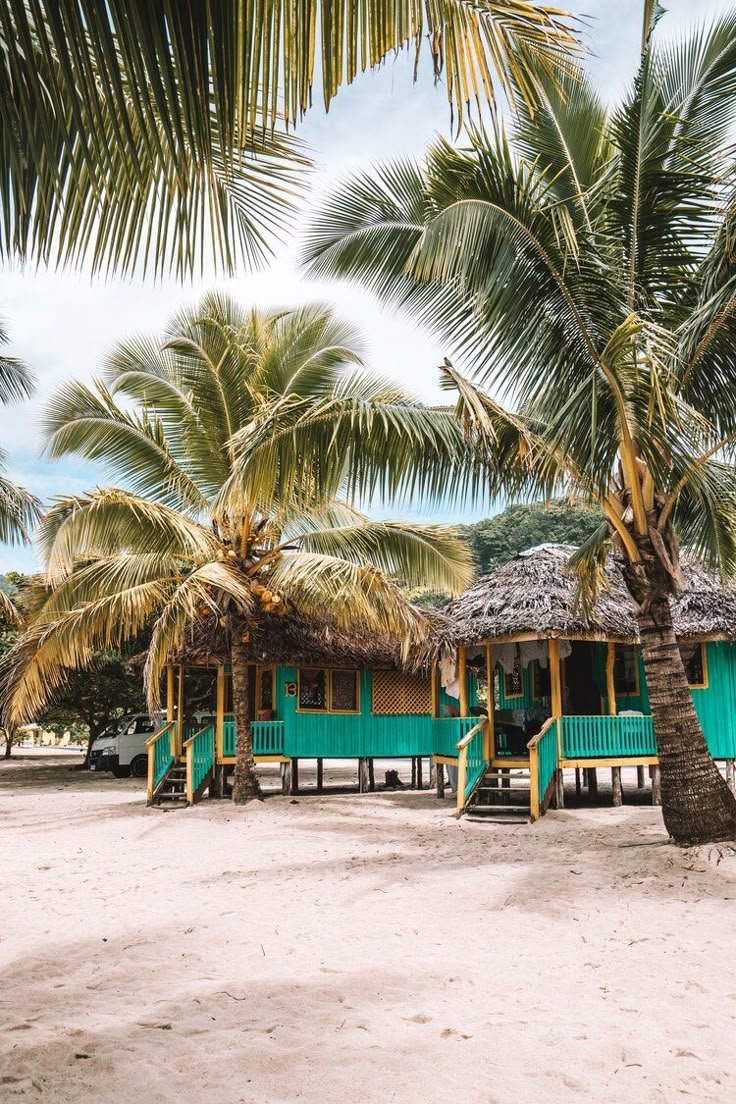
Travel Tips
Traveling to Samoa in 2025 offers an incredible opportunity to experience a beautiful island nation rich in culture and natural wonders. To make your trip enjoyable and safe, it’s essential to be well-prepared. Here are detailed travel tips covering safety advice, local customs, and language basics to help you navigate Samoa confidently and respectfully.
Safety Advice
General Safety
Samoa is considered a very safe destination with low crime rates compared to many other countries. However, like any travel destination, exercising common sense and basic precautions is important. Petty crime such as pickpocketing and theft can occur, especially in crowded areas or tourist spots, but violent crime is rare. Avoid leaving valuables unattended, especially on beaches or in vehicles, and keep your passport and important documents secure at all times.
Women Travelers
Women traveling alone should be mindful of their surroundings, particularly at night or in isolated areas. While Samoa is generally safe, there have been occasional reports of harassment and verbal abuse. It is advisable to avoid walking alone after dark, especially in downtown Apia and near the harbour-front bars. Using reputable transportation and staying in well-populated areas enhances safety.
Health Precautions
Before traveling, consult a healthcare professional about vaccinations. Samoa has had outbreaks of diseases such as typhoid, measles, and hepatitis A, so vaccines for these illnesses are recommended. Mosquito-borne diseases can also be a concern, so bring insect repellent and use mosquito nets if staying in rural areas.
Drink only bottled or purified water to avoid stomach illnesses. Be cautious with street food; eat freshly cooked meals and avoid raw or uncooked items that may have been washed in unsafe water. If you experience any illness, seek medical attention promptly, as local doctors are familiar with regional health issues.
Road Safety
Driving in Samoa can be challenging due to poorly maintained roads, limited signage, and local driving habits. Roads on Upolu and Savai’i are mostly paved but can be narrow and winding. Drive on the left side and avoid driving at night due to poor visibility and stray animals on the roads. Always wear seatbelts, and if you rent a scooter or motorcycle, wear a helmet. Be extra cautious during the rainy season when roads can become slippery and hazardous.
Water Activities
Samoa’s beaches and lagoons are stunning but can have strong currents and riptides. Lifeguards are generally not present, so swim only in designated safe areas and heed local advice. When snorkeling or diving, use reputable operators who follow safety standards and have proper insurance. Avoid overloaded or poorly maintained boats and ferries.
Emergency Contacts
The emergency number in Samoa is 911. It’s also wise to enroll in your country’s travel safety program (like the U.S. Smart Traveler Enrollment Program) to receive alerts and assistance if needed.
Local Customs
Respect for Culture and Tradition
Samoa’s culture, known as Faa-Samoa (the Samoan way), is deeply rooted in respect, family, and community. Visitors should approach local customs with sensitivity and humility.
- Dress modestly when visiting villages or churches. Women should cover shoulders and knees; men should avoid sleeveless shirts.
- Remove shoes before entering homes and some village buildings.
- Ask permission before photographing people, especially during ceremonies or in villages.
- Use both hands when giving or receiving items as a sign of respect.
- Avoid public displays of affection, which are considered inappropriate.
- Respect village protocols, including curfews and designated meeting places. Some villages may require visitors to seek permission from village chiefs before entering.
Fiafia Nights and Ceremonies
Participating in a fiafia (traditional Samoan cultural performance) is a wonderful way to experience local music, dance, and storytelling. It’s customary to show appreciation by clapping and sometimes joining in the dances. If invited to a kava ceremony, accept the drink respectfully and follow the lead of your hosts.
Tipping
Tipping is not a strong cultural norm in Samoa but is appreciated for exceptional service. Small tips to guides, drivers, or hotel staff are welcomed but not expected.
Language Basics
Official Languages
Samoa has two official languages: Samoan and English. English is widely spoken, especially in tourist areas, hotels, and businesses, making communication relatively easy for visitors.
Common Samoan Phrases
Learning a few basic Samoan words and phrases can enrich your experience and show respect for the local culture:
- Talofa (tah-LOH-fah) – Hello / Welcome
- Fa’afetai (fa-ah-feh-TIE) – Thank you
- Manuia (mah-noo-EE-ah) – Cheers / Good luck
- Ia manuia lou aso (ee-ah mah-noo-EE-ah low AH-so) – Have a good day
- Fa’amolemole (fa-ah-moh-LEH-moh-leh) – Please / Excuse me
- Tofa (TOH-fah) – Goodbye
- E lelei? (eh LEH-leh-ee) – Are you well? / How are you?
Using these phrases, even just greetings and thank you, is warmly received by Samoans and helps build friendly connections.
Final Tips for a Smooth Journey
Additional Practical Tips
- Currency: The Samoan Tala (WST) is the local currency. ATMs are available in Apia and some larger towns, but it’s wise to carry some cash when traveling to remote areas.
- Electricity: Samoa uses 230V, 50Hz with British-style three-pin plugs. Bring appropriate adapters.
- Internet and Connectivity: Wi-Fi is available in most hotels and cafes in urban areas, but connectivity may be limited in rural villages.
- Respect Nature: Samoa’s environment is pristine and fragile. Avoid littering, respect marine life, and follow local guidelines when visiting natural sites.
- Cultural Sensitivity: Avoid discussing sensitive topics such as politics or religion unless invited, and always listen respectfully to local perspectives.
In summary, Samoa offers a safe and welcoming environment for travelers who prepare thoughtfully. By respecting local customs, staying aware of safety considerations, and embracing the warmth of Samoan culture and language, your 2025 trip will be not only memorable but also enriching and harmonious. Samoa’s blend of natural beauty and heartfelt hospitality awaits your discovery.

